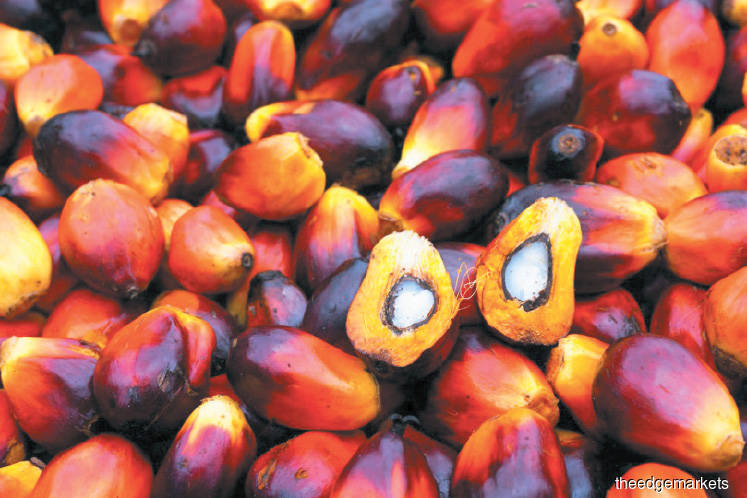
KUALA LUMPUR: Crude palm oil (CPO) prices are expected to remain subdued in the coming months because of oversupply, competitive pricing from Indonesia, and projections of higher production in the second half of 2019 (2H19), according to analysts.
In a note yesterday, MIDF Research analyst Martin Foo Chuan Loong highlighted the spread between CPO futures and spot prices has narrowed over the past months, signalling the market’s negative sentiments on CPO prices going forward.
Malaysian CPO spot prices declined by 10.4% to RM1,872 per tonne as at June — close to a level last seen in March when the spot price was averaging around RM1,893 per tonne.
Similarly, the average third-month benchmark palm oil futures dropped by 13.4% year-on-year (y-o-y) to RM2,106 per tonne, Foo said. “Note that the spread narrowed to RM78 per tonne in June compared with RM209 per tonne in January. Thus, we do not expect any significant recovery in the CPO price in the near to medium term,” he said.
Affin Hwang Capital analyst Nadia Aquidah also observed similar trends. She said despite the improvement in fundamentals, where there was a decline in palm oil inventory levels in both Malaysia and Indonesia, CPO prices have remained sluggish. “In our view, this is due to the weak market sentiment as well as the ongoing trade tensions between the US and China.
“For palm oil, we still expect global palm oil inventories to gradually decline with higher exports and higher consumption of palm oil products,” she said.
CIMB Investment Bank Research analyst Ivy Ng Lee Fang opined that palm oil stocks are expected to remain high at 2.4 million tonnes by the end of July, further depressing CPO prices. Hence, CIMB is reviewing its CPO price forecast of RM2,400 per tonne for 2019 considering the downside risks.
Ng said Malaysia’s total palm oil inventory may have bottomed at June’s 2.42 million tonne level as higher production was offset by stronger exports. She noted that the current palm oil stock of 2.42 million tonnes remains high relative to the five-year historical average of 2.07 million tonnes, despite falling 11% y-o-y to an 11-month low as at end-June.
“This was 1.6% above our projection of 2.39 million tonnes and 3.1% above Bloomberg and Reuters’ consensus forecasts of 2.35 million tonnes, due to higher imports and lower domestic consumption. We are negative about the higher-than-expected palm oil stocks as production is expected to pick up in the second half of 2019,” she said.
Ng further highlighted some key events to watch out for in July including planting progress and crop rating of soybean in the US, Indonesia’s pursuit of the 30% biodiesel content (B30 biofuel), crude oil price and developments in the US-China trade dispute.
On top of the overproduction of palm oil in both Malaysia and Indonesia, MIDF’s Foo pointed out that it will coincide with weaker export demand prospects during 2H19.
“Consequently, we are of the view that stockpile levels might potentially reverse into an uptrend if export demand couldn’t keep pace, inhibiting any potential recovery in the CPO price.
“We also opine that the CPO price war between Indonesia and Malaysia might deepen due to the increased supplies of cheaper Indonesian palm oil flooding the market, causing further downward pressure on the Malaysian CPO price.”
Source : The Edge Markets

